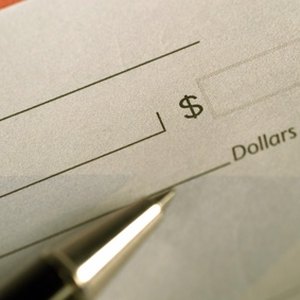
If you have ever opened your checkbook to examine your personal checks, you probably have noticed some defining features. Perhaps the most distinct part of a check is the group of numbers running along the bottom of the check.
These numbers provide a lot of the bank information necessary for processing the payment, such as the bank routing number and your bank account information. You might be impressed by how much information is actually on a check.
Bank Information on a Check
A check is a binding agreement for a payment that is signed by both the payor and the payee. It contains all the obvious and necessary account information for fulfilling a payment from your checking account or savings account. Looking even further, there is actually bank information all over your personal checks.
You will notice numbers at the bottom of your check. There are three groups of numbers at the bottom of the check. The first group is your routing number, the second set of numbers is your account number and the last is the check number. Each individual bank will also include its own security measures and identifying marks, and none of this information appears on a corresponding debit card.
Even the MICR (Magnetic Ink Character Recognition) ink on checks provides identifying markers that can be scanned mechanically using magnetic ink character recognition technology. If you have ever watched a merchant process a paper check through a little scanning machine, you'll notice that the machine is reading both the magnetic ink and the numbers. This is why the font on these numbers is so distinct.
What Is a Routing Number?
You're familiar with your checking account number, but that is not the only group of numbers on your check. In fact, it isn’t even the first set of numbers across the bottom of the check. Instead, the routing number, or routing transit number, is the first set of numbers. This number is as important as your account number.
The other numbers are internal to individual banks, but the routing number differs. A routing number can be considered to be the bank account number for a financial institution. This number in particular indicates the bank from which a payment is drawn. This is a critical piece of information for financial transactions.
Routing numbers were developed and are governed by the ABA, or American Bankers Association®. The ABA issues these numbers to financial institutions such as banks or credit unions. Only institutions that are eligible according to the Federal Reserve can obtain a number because the ABA routing number is in effect an account number with the Fed.
Why So Much Info on Checks?
The Federal Deposit Insurance Corporation insures thousands of banks, and the sheer volume of checks being written across these FDIC-insured banks requires a lot of specificity for successful transactions. An account number alone cannot suffice, since there is a chance that another customer at another bank has the same number.
Financial institutions also fall under strict federal compliance. The Federal Reserve states that there are 12 Federal Reserve districts that are distinguished by specific numbers in the routing number based on geographic location. This means that your bank account opened with a U.S. bank in California will have a different routing number from a U.S. bank account opened in North Carolina.
All of this information is still relevant in the age of online banking and mobile apps. If you have ever set up direct deposit, then you know that most of the information printed on a check was required. That is because even if the check is not physical, the same information is required, even for ACH (Automated Clearing House) transactions or wire transfers.
References
Writer Bio
Hashaw Elkins is a financial services and tax professional, as well as a project management consultant. She has led projects across multiple industries and sectors, ranging from the Fortune Global 500 to international nongovernmental organizations. Hashaw holds an MBA in Real Estate and an MSci in Project Management. She is further certified in organizational change management, diversity management, and cross-cultural mediation.

